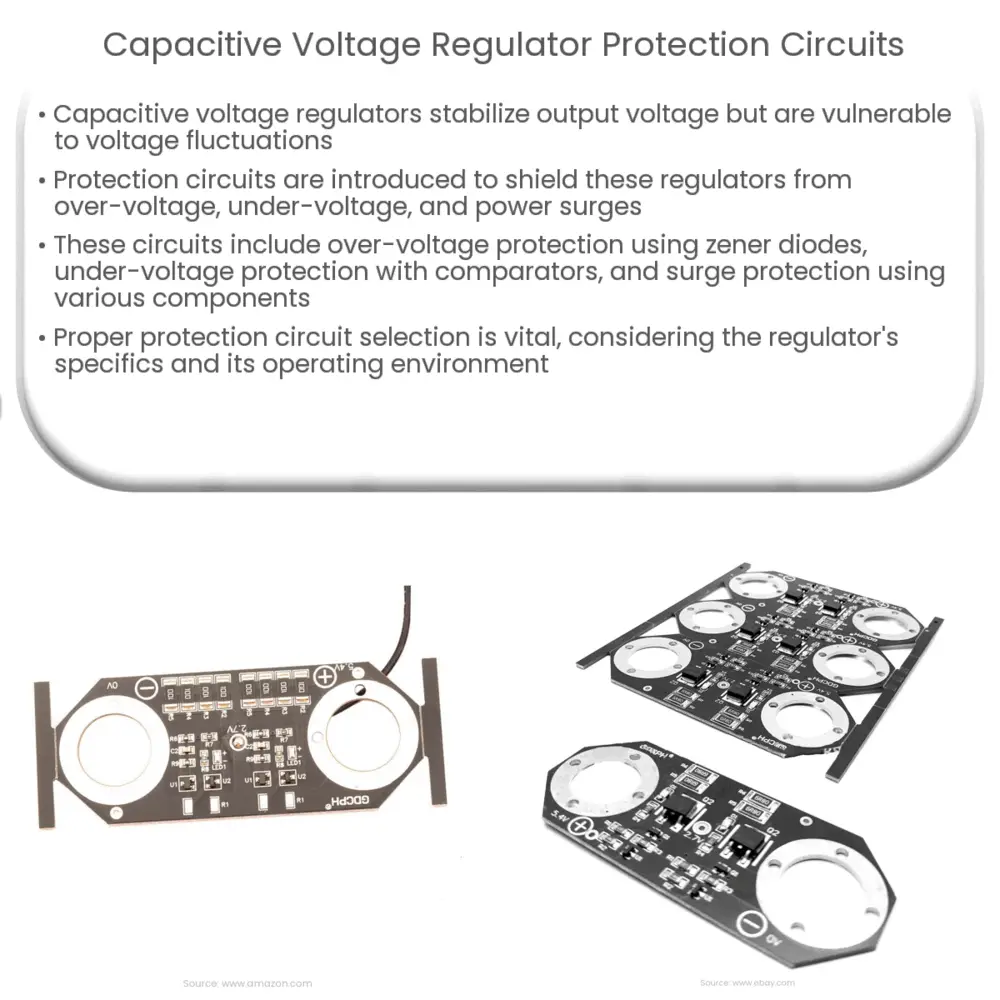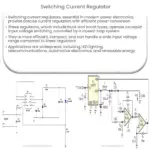Explore the importance and workings of capacitive voltage regulator protection circuits, ensuring device longevity and reliability.

Introduction to Capacitive Voltage Regulator Protection Circuits
A capacitive voltage regulator is a critical component used in many electronic systems. It stabilizes the output voltage by storing energy in an electric field and then releasing it when the supply voltage fluctuates. However, these regulators can be vulnerable to certain issues, such as over-voltage, under-voltage, and power surges. To safeguard these devices, we introduce protection circuits, whose primary aim is to shield the capacitive voltage regulator from harmful conditions.
The Need for Protection Circuits
Without proper protection circuits, capacitive voltage regulators might malfunction or even fail. The high current during a power surge could potentially cause thermal damage or destroy semiconductor elements inside the regulator. Hence, implementing protection circuits becomes essential for maintaining the longevity and reliability of the device.
Types of Protection Circuits
-
Over-Voltage Protection: This circuit is designed to prevent damage due to an excessively high voltage. It typically uses components such as zener diodes or metal-oxide-varistors (MOVs) to shunt the excessive voltage to the ground.
-
Under-Voltage Protection: This circuit interrupts the power or triggers an alarm when the voltage falls below a set value, protecting the device from harmful low-voltage conditions.
-
Surge Protection: Surge protectors safeguard the capacitive voltage regulator from sudden increases in voltage, usually caused by lightning strikes or power line surges.
The Working of Protection Circuits
Let’s delve a little deeper into the functionality of these protection circuits.
-
Over-Voltage Protection: The key component in an over-voltage protection circuit is the zener diode or MOV. When the voltage reaches a certain level, the diode starts to conduct, effectively diverting the excessive voltage to the ground and away from the capacitive voltage regulator.
-
Under-Voltage Protection: This circuit commonly uses a comparator to continuously monitor the voltage. When it falls below a predetermined threshold, the comparator changes its output state, triggering an alert or shutting down the device to prevent damage.
Overall, capacitive voltage regulator protection circuits offer an additional layer of security to the primary device, making it resilient to potential hazards caused by voltage fluctuations.
Continuation of Protection Circuit Operation
-
Surge Protection: Surge protection circuits generally employ components like gas discharge tubes, silicon avalanche diodes, or MOVs. These components have the ability to conduct very high current for short durations. In the event of a power surge, these elements will conduct the excess current to the ground, protecting the voltage regulator.
Selection and Design of Protection Circuits
While choosing or designing a protection circuit for a capacitive voltage regulator, various factors need to be considered. The type of protection needed is dependent on the operating environment. For instance, a voltage regulator in an area prone to lightning strikes might require robust surge protection.
Furthermore, the specific parameters of the voltage regulator, such as its maximum allowable voltage, operating voltage range, and current capacity, should be considered. This information is crucial to ensure that the protection circuit activates at the correct voltage levels and is capable of handling the current during fault conditions.
In the design stage, simulations are often performed to verify the protection circuit’s functionality. These simulations help in validating that the circuit behaves as intended and safeguards the voltage regulator under various fault scenarios.
Conclusion
In conclusion, capacitive voltage regulator protection circuits play a critical role in maintaining the overall reliability and performance of electronic devices. By effectively mitigating the risks associated with over-voltage, under-voltage, and power surges, these circuits ensure that voltage regulators can function optimally under varying conditions. Consequently, this results in enhanced device longevity, preventing potential system failures and reducing the need for frequent maintenance or replacements.
It’s also vital to consider the specific requirements of the voltage regulator and its operating environment when designing and selecting protection circuits. By tailoring these circuits to the specific needs of the system, we can ensure that our devices remain safe, reliable, and durable even in the face of unexpected electrical disturbances.



